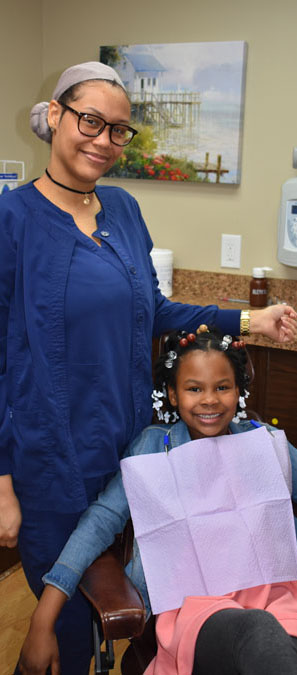 When the dentist orders an X-ray of your teeth, you may worry about safety. If you have children, you worry in their case, as well. However, X-rays provide the dentist and staff with a clear picture of the exact condition of the teeth, which is essential to proper dental care.
When the dentist orders an X-ray of your teeth, you may worry about safety. If you have children, you worry in their case, as well. However, X-rays provide the dentist and staff with a clear picture of the exact condition of the teeth, which is essential to proper dental care.
Modern technology has played a significant role in making X-rays safer. In many dental practices, including Moore Family Dental, conventional X-rays have been replaced by digital X-rays. Specialized software makes it possible for the dentist and staff to view the images in a larger size, with contrast, or in color as necessary. This makes diagnoses quicker and more accurate and enables the dentist to detect problems earlier. Above all, with digital X-rays, the patient receives far less radiation.
Even with advances in technology, it is best to use X-rays only when necessary. The American Dental Association (ADA) addresses this issue on its website, stating that the frequency of X-rays “depends on your present oral health, your age, your risk for disease, and any signs and symptoms of oral disease you may be experiencing.” Noting that X-rays may be needed for children with greater frequency than with adults, the site explains, “This is because their teeth and jaws are still developing. Also their teeth are more likely to be affected by tooth decay than those of adults.”
Is there a recommended frequency? The Boston Globe posed the question to dentists.
“Dr. W. Mark Donald, a general dentist in Louisville, Miss., and spokesman for the Academy of General Dentistry, says that, in general, adults and children should have two to four ‘bite wing’ X-rays twice a year to make sure all incipient cavities and other problems are caught early. But he and other dentists caution that this is just a general recommendation and that the actual frequency of X-rays varies significantly among patients, depending on the patient’s history of dental problems and the dentist’s judgment.”
You can – and should – ask the dentist about the reason for any X-ray. It is important to be knowledgeable about your own dental health. As the Boston Globe article notes, your history and habits are key factors in determining when you may need X-rays.
“If a patient is at low risk for dental problems, never has new cavities, eats a healthy diet and practices excellent oral hygiene – brushing and flossing daily – he or she may need X-rays only once every two to three years, said Dr. Dara Cunnion, a pediatric dentist at the Boston University School of Dental Medicine.”
Dental X-rays during pregnancy
The American Dental Association, acknowledging that a serious dental situation may arise during pregnancy, emphasizes, “Radiation exposure resulting from dental X-rays is low,” but notes that the ALARA principle is always applied. This means “every precaution is taken to ensure that radiation exposure is As Low As [Reasonably] Achievable.” In addition, the ADA recommends the following:
“A leaded apron minimizes exposure to the abdomen and should be used when any dental radiograph is taken. Also, a leaded thyroid collar can protect the thyroid from radiation, and should also be used whenever possible. The use of a leaded thyroid collar is recommended for women of childbearing age, pregnant women and children.”
If you are unsure about any dental procedures, don’t be afraid to ask your dentist about they frequency, type, and any risks associated with X-rays.



